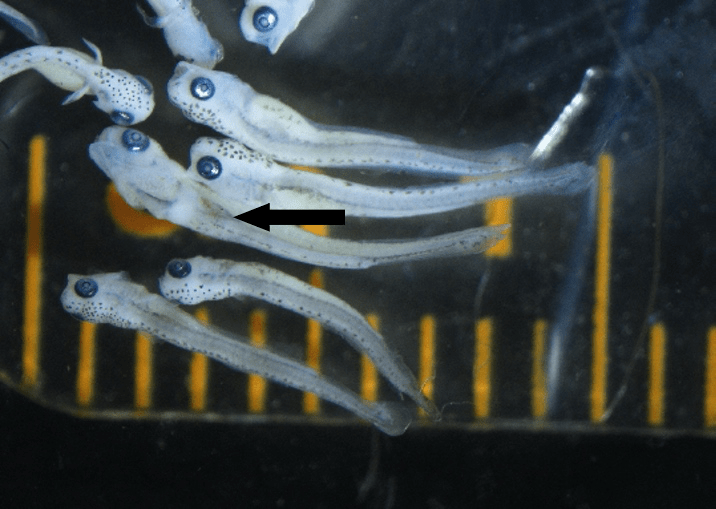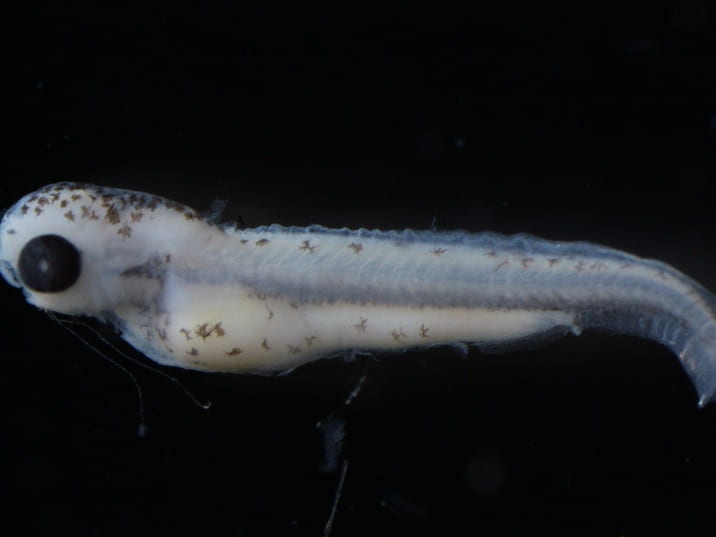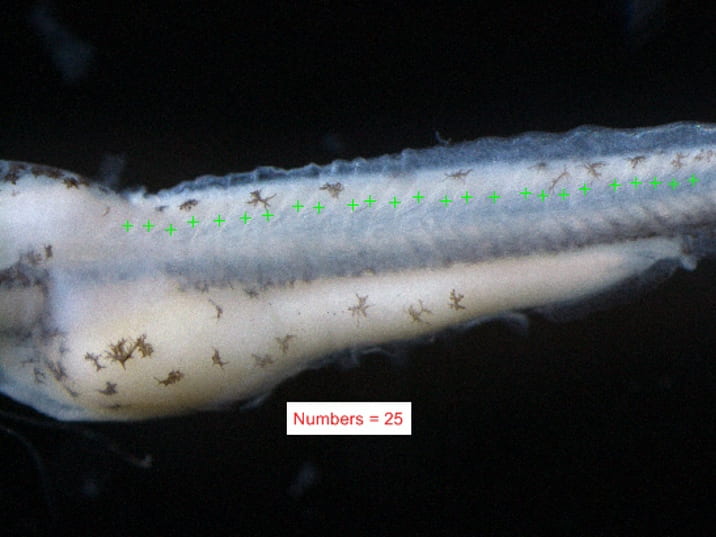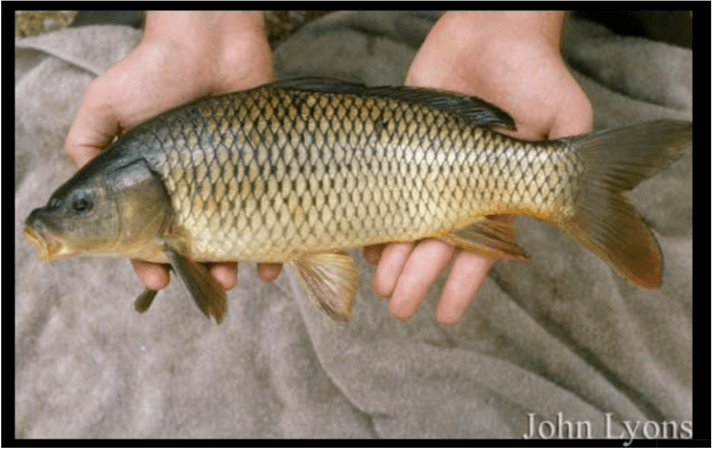Key Characteristics:
- Most have a lateral stripe. Single dorsal fin. Pigment on top of the head.
- Dorsal fin begins after the start of the pelvic fin in some species (emerald and golden shiners).
- Very hard to key out to species except for a few unique species until about 20 mm.
- More pre-anal myomeres than post.
- Rounded head, brown melanophores. “y” marker behind gills (arrow below)

Larval Common Carp’s “Y” Marker. 6 mm. United States Fish Wildlife Service. Green Bay Harbor, WI. Ashley Smith. 2017.

Larval Common Carp. United States Fish Wildlife Service. Marian Shaffer. 2017.

Larval common Carp’s Myomeres (Pre-Anal). United States Fish Wildlife Service. Marian Shaffer. 2017.

Larval Common Carp. 7 mm. United States Fish Wildlife Service. Green Bay Harbor, WI. Adam Dziewa. 2018.

Larval Common Carp. 15 mm. United States Fish Wildlife Service. Green Bay Harbor, WI. Ashley Smith. 2018.
- Body not elongated, eel-shaped, round in transverse section, uniformly pigmented (1B)
- Chin barbels absent (3B)
- Snout short, its length usually less than 10% TL; median fins otherwise (5B)
- Median fins or finfolds showing distinct separation (7B)
- No adipose fin, or demarcation of one, in finfold (10B)
- Preanal myomeres greater than or equal to postanal myomeres (14A)
- Preanal myomeres significantly greater than postanal myomeres (difference greater than five myomeres) (15B)
- Postanal myomeres greater than 10 (26B)
- Preanal myomeres usually less than 30 (28A)
- Cyprinidae (Carps + Minnows)
Adult History
- Physical Description
- (Subterminal) Extendable mouth, deep and flattened body, two pairs of barbels, long dorsal fin with a serrated spine, yellow/brown with dark-olive sides, dorsal fin has 15-23 rays while anal fin has 4-6 rays, 32-38 lateral scales, no teeth, and scales have a darker appearance with a spotted pattern
- Spawning Habitat
- Rivers, lakes, marshes, forested swamps, ponds, turbid waters, and vegetated areas of streams
- Very shallow water & lake edges (Energetic splashing along the shore)
- Spawning Substrate
- Over aquatic vegetation, tree roots, mud bottom, or gravel in water bodies
- Spawning Behavior
- Guard their eggs until hatching or until the young are able to swim
- Time of Year
- Mid-May – Early August in Great Lakes Basin
- Spawning typically takes place at water temperatures of 60-80°F
- Diet
- Omnivores
- Insects, crustaceans, mollusks, algae, other submerged plants
- Seeds, nymphs, leeches, crayfish, and shrimp
- Omnivores

